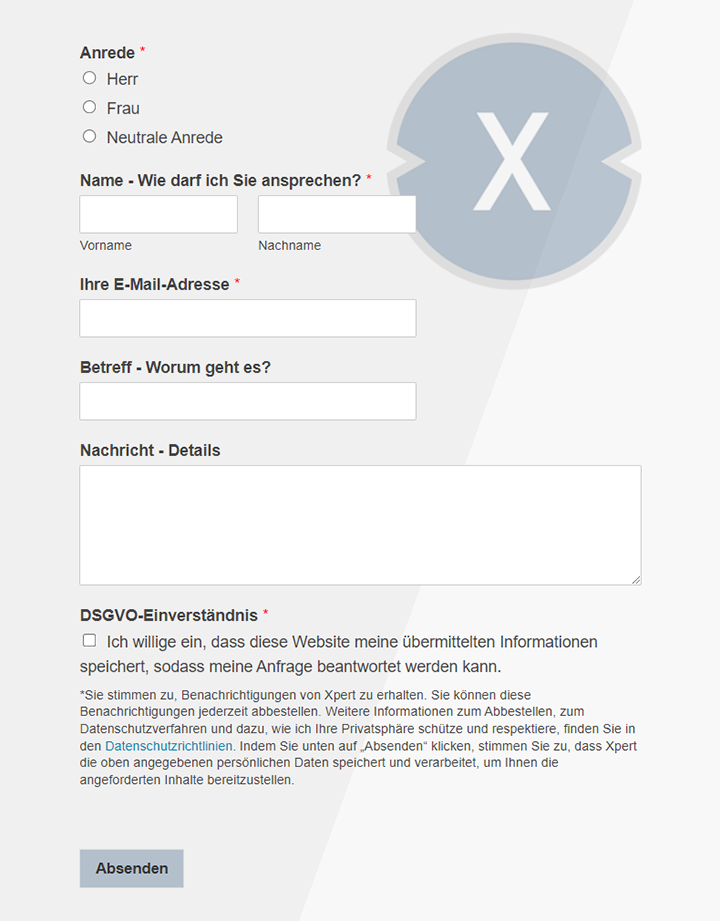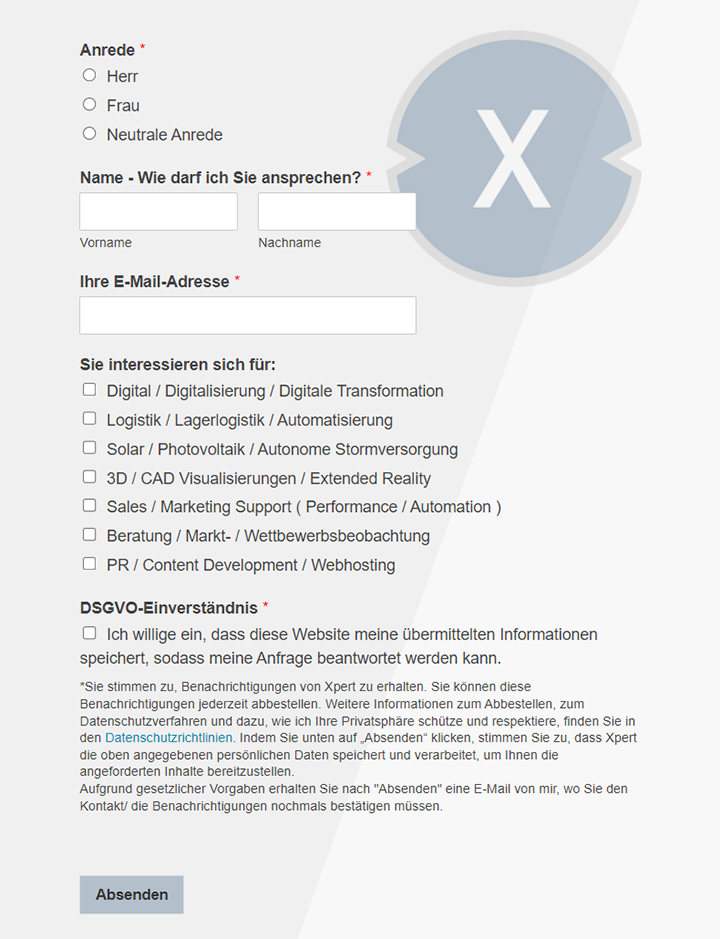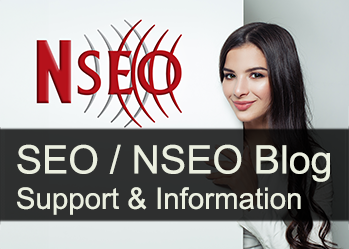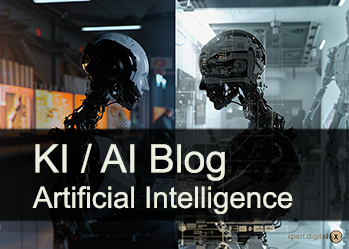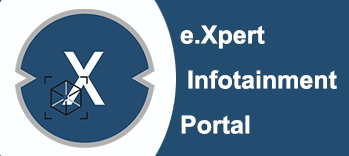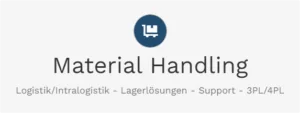Google Gemini with AI Overviews in the search results and the future of the media: An analysis of the threat to publishers
Xpert pre-release
Language selection 📢
Published on: April 13, 2025 / update from: April 13, 2025 - Author: Konrad Wolfenstein

Google Gemini with AI Overviews in the search results and the future of the media: An analysis of the threat to publishers - Image: Xpert.digital
How AI revolutionizes the media industry - AI overviews and the traffic loss: future of the digital media landscape (reading time: 31 min / no advertising / no paywall)
The controversy around AI in the search - will Google Gemini destroy the media business?
The digital media landscape is in constant change, but rarely has a technological development triggered as quickly as a result of the introduction of Google's generative AI functions. A concise expression of this concern comes from Dennis Ballwieser, editor-in-chief of the “Pharmacy Umschau” and managing director of the Word & Bild publishing group. At the media camp of Oberauer Verlag in Berlin in April 2025, he formulated a dark forecast: "Google's Gemini will destroy us".
This statement, made shortly after the broader implementation of Google's Ki model Gemini and the associated “AI Overviews” (AIOS) in the search results, reflects a growing fear in the publishing industry. Ballwieser complained that media already suffer from the new technology and proclaimed the end of an established business model: "Range was no longer a business model".
The media camp 2025, an event for young media and industry experts, offered the stage for this alarming assessment. Ballwieser was listed as a speaker and spoke, among other things, about the changes due to artificial intelligence in medical journalism. His statement underlines the central challenge: How can media companies survive and flourish if the technology that has delivered the majority of their traffic for years threatens to intercept this traffic at the source?
This report analyzes the concern expressed by Ballwieser in the context of how Google Gemini and Ai Overviews work. He examines the specific effects on traffic, monetization and SEO strategies, highlights the broader consequences for the media industry, compares the situation in Germany with international developments and evaluates the validity of the perceived threat. The aim is to provide a well-founded assessment of the potential dangers and the necessary strategic adjustments for media companies in the age of AI-supported search.
Suitable for:
- Breaking through traffic through Google AI overviews: The new challenge for website operators and their traffic development
Google Gemini and Ai Overviews: How it works and mechanism
In order to understand the concerns of publishers such as Dennis Ballwieser, a fundamental understanding of the technology is necessary on which these concerns are based: Google Gemini and the resulting function “Ai Overviews” (AIOS) in Google search.
Google Gemini: The foundation
Gemini is Google's family of Large Language Models (LLMS), which serves as the basis for its generative AI applications. These models are trained by “reading ”ing trillions of words to recognize language patterns and generate human -like answers to inquiries (prompt). Gemini exists in different versions with different performance levels, including nano (for on-device tasks), flash, pro (the middle level, often free of charge) and ultra (the most powerful variant, often part of payment subscriptions such as Gemini Advanced).
Gemini is designed multimodal, which means that it can not only process text, but also images, audio, video and code. For example, users can upload images and ask questions or give Gemini for help with programming tasks. The AI learns continuously from interactions, including user prompts and feedback. However, Google explicitly points out that Gemini can make mistakes (“hallucinating”) and can provide inaccurate or even inappropriate information. Gemini himself cannot explain his own way of working correctly.
Xpert.digital already an integral part of the Google Ai Overviews
Suitable for:
AI overviews: The implementation in the search
AI Overviews (AIOS), originally tested as a “Search generative Experience” (SGE) in the Google Search Labs, are the most prominent integration of Gemini into Google search. These are AI generated summaries that appear directly on the earnings page (SERP) for certain search queries, often before the traditional “blue links”.
AIOS works from pure chatbots:
Integration with ranking systems
AIOS use a Gemini model specially adapted for the search, which is closely integrated with Google's core web ranking systems. The AI identifies relevant, high -quality results from Google's Index.
Information synthesis
The AI synthesizes information from several sources to give a summary answer to the user request. This is particularly relevant for complex or multi-stage questions (“Multi-Step Reasoning”), which would otherwise require several insults.
Source link
Aios contain links to the websites that support the information in the summary. Google emphasizes that this enables users to dive deeper and to discover a variety of content. The links are selected automatically by Google's systems. Google has implemented updates since the start to add more links and increase their visibility (e.g. inline links, right sidebar).
Focus on facts
According to Google, AIOs are designed in such a way that they only display information based on top weirds to minimize hallucinations. Errors were more likely to be made by misinterpreting inquiries or nuances in the web content.
Context window and adaptability
Newer versions allow larger context windows (more interaction depths) and the possibility to adapt the AIO response (simplify language, break down more detail).
Technology upgrade
Google has started to use Gemini 2.0 for Aios in the USA, which should enable faster and high -quality answers, especially for more complex topics such as programming or mathematics.
AI fashion
As a further development, Google tests an “AI Mode” in the Labs, which relies even more on dialog-oriented, AI-controlled answers and uses a tailor-made version of Gemini 2.0. This mode uses techniques such as “query fan-out” to search several relatives at the same time and combine the results.
The core of the problem for publishers
The central challenge for publishers results from the functionality of the AIOs: By summarizing and presenting information directly on the search results page, you potentially reduce the need for users to click on the original source website. Even if there are left, they are competing with the directly displayed AI response. This threatens the traditional model in which search engines forward traffic to publisher, which is then monetized via advertising or other means.
Ballwieser's specific concerns: "Reach is no longer a business model"
Dennis Ballwieser's concern on the media camp goes beyond general technology criticism. It aims at the heart of the previous digital business model of many publishers, especially those in the special interest area such as the “pharmacy umschau” he led. His key statements illustrate the perceived existential threat:
"Gemini from Google will practically destroy us"
This drastic wording signals that the AI functions enabled by Gemini are not only a gradual change, but also a fundamental risk of survival of established media.
Downgrading into search results
Ballwieser already observed a downgrade of media offers in the Google search results. This correlates with reports that ai overviews significantly move the organic links downwards. If the primary source of visibility and traffic-the top positions in Google search-loses value or taken by AI generated content, this undermines the basis of many digital range strategies.
“Portals that aim at range are dead”
This statement is the core of his argument against the previous business model. He predicts that range -based models will no longer throw money in one to three years at the latest. The reason is the functionality of the AI overviews: If users receive the information they are looking for directly in the Google summary, the incentive is eliminated to click on the left of the publisher. Rang, measured in page views and clicks via search engines, loses your direct monetization ability through advertising based on it.
End of the previous content investment model
Ballwieser explained that high investments in high-quality texts for the “pharmacy umschau” had so far been worthwhile because this content has been able to generate traffic continuously for years. This model (“Longtail” effect) based on durable and cumulative range no longer works: “This business model, which has been working for 20 years, has been over”. The AI summaries can devalue the value of this content that has been built for years, almost overnight by extracting the essence and keeping the user away from the original source.
Necessity of new offers
Consequently, publishers such as Word & Image should be able to think about what they can offer, the large AI language models cannot deliver. This implies a strategic realignment away from easily summarized information to unique content, profound analysis, exclusive data, community binding or other added values that go beyond the pure information transfer.
Nevertheless, special interest journalism needs
Despite the dark forecast for the range model, Ballwieser still sees a need for specialist journalism, especially in the health sector. He named the example of women's health as an issue with enormous interest that has been neglected for a long time. This indicates that the solution is not in the task of journalism, but in adapting the offer and the business model to the new reality, trust, expertise and addressing specific user needs.
In summary, it can be said that Ballwieser's criticism identifies the core mechanics of the AI Overviews as a direct threat to the monetarization model of publishers based on search engine traffic. The ability of the AI to answer user inquiries directly decoupled the provision of information from traffic to publisher pages and forces the industry to redefine the value of “reach” and to develop alternative business models.
Suitable for:
- GEO instead of SEO: Google Core updates and SEO priorities for the future-an analysis of March 2025 updates
Quantification of the threat: Effects on traffic and data challenges
The fear expressed by Dennis Ballwieser that range is no longer a business model is based on the assumption that Google Ai Overviews (AIOS) significantly reduce traffic to publisher website. The analysis of the available data and reports draws a complex but worrying image of these effects.
Mechanisms of traffic reduction
Replacement of organic links
The most striking effect of Aios is its placement in a prominent place in the search results, often over the traditional organic links. An examination of the Press Gazette showed that the first organic result was moved down by 980 pixels in the case of news views in the USA where an AIO was displayed-this corresponds to about a whole side scroll. This displacement corresponds approximately to a downgrade to position five or lower. In view of the fact that the first position typically receives around 40% of the clicks, while position five only achieves about 5%, this implies a potential loss of click rates (CTR) of up to 85% for the formerly topped page, it should be completely replaced by the AIO. Another analysis reported a decline in the organic CTR by 54.6%if an AIO was present.
Zero-Click search and direct answers
Aios reinforce the trend towards “Zero-Click” searches, in which users find their answer directly on the search results page without having to visit a publisher website. Even if this phenomenon already existed before Aios (a study of 2022 found that over half of the users did not leave Google for a search), the extensive AI summits make it more likely that users will remain on the Google page.
Search volume forecasts
The concern is reinforced by forecasts such as that of Gartner, which predict a decline in traditional search engine volume by 25% by 2026, since users are increasingly using AI chatbots and virtual agents. Although this forecast is controversial and other data show that Google's dominance has so far hardly been affected, it contributes to the uncertainty of the publishers.
The data dilemma: non-transparency and contradictory reports
A central problem with the assessment of the actual effects of AIOS is the lack of transparent, granular data.
Missing attribution
Google does not separate Aios's referral traffic from regular search traffic to tools such as Google Analytics or the Google Search Console. This makes it impossible for publisher to measure the direct influence of Aios on its click numbers. Even third-party tools cannot deliver this data. This non -transparency (“opacity”) makes every sound strategic planning difficult.
Contradictory data points
The available reports draw an inconsistent picture.
- Some great publishers such as Zeit Davis and Dotdash Meredith reported in early phases after the introduction of “negligible” or “minor” effects on their traffic. However, these reports often relativized themselves through the indication that it was still “early” or that they refer to keyword sets, in which AIOs appeared less frequently (e.g. only 8-15% of the search queries).
- In contrast, there are numerous reports on significant traffic burglaries, especially for smaller publishers (declines of over 50%, 70% or even 96%) and certain types of content. A study found an average traffic loss of 8.9% for pages that were found in an AIO, and 2.6% for pages that were published on a SERP with AIO but were not found.
- Semrush data show that AIOS over time has more and more keywords (increase from 6% to 11.4% of informational keywords within six months), which indicates increasing displacement.
An analysis of almost 10,000 keywords resulted in a decline in the organic CTR from 1.41% to 0.64% within one year if Aios were present.
Google's narrative vs. reality
Google officially claims that Aios leads to more clicks on the links contained and traffic traffic on a greater variety of websites. However, these statements are strongly questioned by publishers and analysts, since Google does not provide any data for underpinning and the claims appear countertuitive.
The data situation for the traffic-impact is therefore very fragmented and seems to be dependent on factors through which Google does not offer transparency. While the potential for significant negative effects by mechanisms such as the displacement of organic links and direct answers is undeniable, the actually realized effect significantly varies. This indicates that AIOS is not a uniform “destruction machine” so far, but a disruptive force, the effects of which are unevenly distributed. They seem to be less strongly hit (transactionally) less strongly, while others (informational, smaller sides) can be severely damaged. The lack of clear assignment of traffic sources by Google represents a critical hurdle in order to fully understand these nuances and to be able to react strategically.
The high prevalence of Aios in Ymyl searches (your money, your life) is particularly explosive, despite Google's declared caution on sensitive topics. Studies show a high AIO rate for health (65%), legal (78%) and financial inquiries (42%). This is a high risk, since documented inaccuracies in Aios can have particularly serious consequences here. For publishers such as the “pharmacy umschau”, the core competence of which lies in trustworthy health information, this means direct competition through potentially faulty AI meetings in the most critical information segment. The threat goes beyond pure traffic loss and questions the authority and trustworthiness of established sources.
🎯🎯🎯 Benefit from Xpert.Digital's extensive, fivefold expertise in a comprehensive service package | R&D, XR, PR & SEM

AI & XR 3D Rendering Machine: Fivefold expertise from Xpert.Digital in a comprehensive service package, R&D XR, PR & SEM - Image: Xpert.Digital
Xpert.Digital has in-depth knowledge of various industries. This allows us to develop tailor-made strategies that are tailored precisely to the requirements and challenges of your specific market segment. By continually analyzing market trends and following industry developments, we can act with foresight and offer innovative solutions. Through the combination of experience and knowledge, we generate added value and give our customers a decisive competitive advantage.
More about it here:
Google Ai Overviews: Curse or Opportunity for Digital Media? 2 billion dollars loss - does this threaten the content of advertising -financed content?

SEO newly thought: Success factors in the era of the AI Overviews-Direct public contact instead of Google dependency: strategies for publishers-Image: Xpert.digital
Ripple Effects: Wider consequences for the media industry
The introduction of Google Ai Overviews triggers far-reaching waves that go beyond the pure traffic loss and influence the entire ecosystem of digital media. The consequences extend to advertising revenues, SEO practices and the basic need for publishers to rethink their business models.
Advertising revenue under pressure
For many publishers, especially those that rely on freely accessible content, advertising revenues are the primary source of financing. These income is linked directly to the range - measured in ad impressions and clicks. A decline in website traffic by AIOS therefore immediately leads to lower advertising revenues. It is estimated that AIOS (or the precursor technology SGE) of the industry could withdraw advertising revenues of $ 2 billion annually. Individual publishers already report drastic burglaries of their advertising revenues, sometimes by up to 65%.
This development questions the long -term load -bearing capacity of the advertising -financed model on the open web. When AI summits decouple users from the contents of the publisher, the value chain collapses. There is also concern that advertisers could shift their budgets to other channels, such as social media, if they perceive the traffic generated by search engines as inferior or dominated by bots.
The developing SEO landscape
Search engine optimization (SEO) must adapt fundamentally to the new reality.
Shifting of the focus
The traditional goal of ranking 1 of the organic search results loses importance when an AIO is displayed. It will be a new main goal to be named or linked as a source within the AIO.
Content strategy
The focus is moved towards high quality, unique and in -depth content that is difficult to replicate or summarize for a AI. The principles of EEAT (Experience, Expertise, Authoritative Center, Trustworthiness) become more important in order to signal credibility and potentially be taken into account for Aios, especially in the Ymyl area.
Technical optimization
Structured data (Scheme Markup) help the KI to better understand and contextualize content. Optimization for featured snippets and “People ie ASK” boxes could correlate positively with an inclusion in Aios. Clear, concise and well -structured content (headings, lists) are preferred.
Keyword strategy
Long-tail keywords and natural language questions that Aios aim could become more important. It is crucial to analyze which keywords trigger Aios at all.
Accelerate the need for new business models
The threat of search engine traffic intensified by Aios forces publishers to reduce their dependence on Google and to open up alternative sources of income and sales channels.
Diversification
A wider scatter of the traffic sources is essential. Publishers have to invest in channels such as social media, email marketing and partnerships.
Direct public relations
The establishment of loyal target groups through newsletters, membership programs, subscriptions, own apps and community engagement becomes vital. These direct relationships are more resilient compared to algorithm changes.
Value beyond the range
The focus must be moved from pure range (volume) to unique value. This can be done by paywalls for premium content, exclusive analyzes, events, data products or specialized tools. Examples of adjustments are Gannett's use of AI for summaries under human control, Axel Springer's experiments with AI tools such as “Hey_” and Voice cloning for podcasts or the use of AI by the pharmacies Review to create barrier-free texts.
The introduction of AI Overviews thus acts as a catalyst, which accelerates existing trends in the media industry. The need to diversify sources of income and build direct relationships with the audience was already present before Aios. Strategies such as subscriptions and newsletters have already been discussed and implemented. However, AIOS increase the pressure massively by directly threatening the primary traffic source of many publishers. The search for alternative sources of income and direct traffic becomes an existential need from a strategic option. It forced a reassessment of its own added value.
At the same time, there could be a positive feedback loop for quality. While AI summaries make basic information about the goods, the perceived value moves towards unique analysis, profound expertise, exclusive reporting and strong brand confidence (as signaled by EEAT emphasis). Publishers that successfully cultivate these qualities could find that their value is increasing in a AI saturated world. You could enforce higher subscription prices or attract more loyal direct groups, even if the overall range decreases through the search. By concentrating on real quality and expertise, you could build stronger direct relationships and potentially develop new monetization models based on this trust. The AI threat for high-quality providers could become a competitive advantage over producers of lower quality.
Suitable for:
- Forget keywords! This is how B2B SEO works in the age of Google Gemini-Eeat: The secret for top rankings
A spectrum of views: industry reactions and Google's point of view
The introduction of AI Overviews has caused a wide range of reactions that range from existential fear to careful optimism. At the same time, Google tries to dispel the concerns and emphasize the advantages of its technology.
Concerns and measures by the publisher
Widespread fear
Many publishers express profound concerns and fear a breakdown of traffic and massive loss of income. Terms such as “catastrophic”, “death blow”, “annihilation”, “devastating” and “content theft” are common.
Formal complaints and complaints
The News/Media Alliance, which represents over 2,200 publishers, demanded investigations by the US authorities FTC and Doj for Google's practices. The learning portal Chegg sued Google on the grounds that AI overviews distracted traffic, damaged sales and injured competition law due to forced content access. Other complaints also exist. European publisher associations also express concerns about competition and copyright.
Voices from practice
Dennis Ballwieser (pharmacy umschau) fears the “destruction”. Jake Boly (fitness website) reported a traffic burglary of 96%. Morgan McBride (Charleston Crafted) reported over 70% traffic loss and 65% loss in advertising revenue. Jan van der Crabben (World History Encyclopedia) states that the “unspoken contract” is broken between Google and publishers.
Counter arguments and mitigating factors
Reports about low effects
Large publishing houses such as Dotdash Meredith and Davis reported in telephone conferences with investors of minimal effects. However, these statements were often indicated that it was still early or referred to specific content mixes.
Technical/economic constraints for Google
Stuart Forrest (Bauer Media) argues that Aios is expensive for Google in operation and susceptible to inaccuracies (hallucinations). Google avoid your own advertising model on sensitive topics and potentially endanger your own advertising model, which makes a universal roller unlikely.
Focus on quality (EEAT)
Some industry representatives believe that Google's emphasis on quality signals could benefit high -quality publishers in the long term.
AI referral traffic
Some studies indicate an increasing referral traffic of AI tools such as Chatgpt (although this is still low in comparison to organic search). This suggests that alternative discovery paths could arise.
Google's position
User
Google represents Aios as an improvement for users who receive faster and more comprehensive answers. CEO Sundar Pichai emphasizes the fulfillment of user expectations.
Traffic and value creation partnership
Google insists that Aios send “billions of clicks” every day, direct traffic to a “larger variety” of websites and that links within Aios receive more clicks. Google explains that the “long -established value creation partnership ... will continue”. Pichai believes Aios leads to “growth for high -quality content”.
Rejection of the sole causality
Google spokesman describes it as “misleading” to blame Aios solely for traffic and refer to other factors such as algorithm updates and user behavior.
Accuracy and improvement
Google admits that Aios can make mistakes ("not always right"), but claims that the accuracy improve and is comparable to featured snippets. Updates have been implemented to address early criticisms.
Between Google and many publishers there is obviously a fundamental discrepancy in perception and deep distrust of the effects and intentions of AIOs. Google's narrative of the user section and the continued value creation partnership is in a sharp contrast to the experiences and fears of numerous publishers, especially smaller ones. The lack of transparent data exacerbates this distrust because it makes it difficult to check Google's claims or to objectively evaluate the situation. This information asymmetry is a key feature of the current conflict and prevents a constructive dialogue or reliable planning.
Chegg's lawsuit marks a significant escalation. The conflict shifted from industry complaints to legal disputes based on competitive and potentially copyright infringement. The outcome of this procedure could create important precedents for how AI models can use publisher content and how the competition in the AI-driven search market is designed. A judicial discussion forces disclosure and review that go beyond PR statements. A judgment in favor of Chegg could force Google to make changes to Aios or to compensation, while a judgment for Google could reinforce its current approach. The lawsuit is therefore a critical event, the development of which can be observed closely.
Suitable for:
- The revolution of Google search in Germany: Effects of the AI update of March 26, 2025 and strategies for companies
The European dimension: Germany in the global context of AI search
The introduction and effects of Google Ai Overviews must also be considered in the specific context of the German and European market, which is characterized by its own regulatory framework and a various publishing landscape.
Status of the AIO introduction
- AI overviews were officially introduced in the USA in May 2024. An expansion to other countries such as Great Britain, India, Brazil etc. followed.
- At the beginning of March 2025, the first tests of Aios in Germany, Switzerland, Italy and Spain were observed.
- The official start in Germany, Austria, Belgium, Ireland, Italy, Poland, Portugal, Spain and Switzerland took place on March 26, 2025. Aios are now available in over 100 countries.
- The introduction seems to be done gradually and possibly depending on the browser, with a higher prevalence in the Chrome browser. Use usually requires a logged in Google account and a minimum age of 18 years.
German publisher reactions and context
- Dennis Ballwieser (pharmacy-Umschau / Wort & Bild Verlag) is a prominent German voice that expresses strong concerns. His focus is on the health sector, a central Ymyl area. Ymyl stands for “Your Money, your life” (in German: “Your money or your life”). It is a term that Google has shaped to categorize websites whose content can potentially have a significant impact on the life of users. This includes topics that affect health, financial stability, security or general well -being
- Axel Springer pursues another strategy and announced a global partnership with Openai (the developer of Chatgpt) in December 2023. This allows Openai to use the content of brands such as image, world and politico for the training of its models and the display of summaries in Chatgpt - including the source and left. This shows divergent approaches under large German publishers: confrontation versus partnership with a AI player.
- Other German publishers such as the Rhine Palatinate and Mercury Experiment with AI to increase efficiency (summaries, text revision, advertising optimization), but emphasize the need for human control. The Rehm Verlag uses AI for the internal search.
- German publisher associations such as the BDZV (Federal Association of Digital Publisher and Newspaper Publishers) and the VBZV (Association of Bavarian Newspaper Publishers) are actively involved in discussions about Google's market power, copyright and AI regulation. The DJV (German Journalist Association) has published position papers that emphasize human supervision, responsibility and the protection of jobs in journalism in the face of AI.
Regulatory environment: the EU AI Act and the DMA
The EU AI Act, the world's first comprehensive AI law, determines obligations based on the risk of AI systems. General Purpose AI (GPAI) models, as they drive Aios, are subject to transparency requirements.
It is crucial that the AI Act developer from GPAI obliges to publish summaries of the copyrighted data used for training and to implement guidelines to comply with EU consulting law (including opt-out options). This should promote licensing ecosystems.
The law also prescribes the labeling of AI generated content such as Deepfakes, whereby exceptions can exist for editorially tested content in the media.
The Digital Markets Act (DMA) puts gatekeen such as Google duties that potentially influence how they do the search and interact with publishers in the EU. Some changes that Google made in the EU (e.g. special units for comparison websites) were explicitly justified with the DMA conformity. News Media Europe is calling for DMA examinations for competition in generative AI.
There is a persistent debate as to whether the current EU regulations adequately address the needs of the media sector, power-making weights and social risks of AI.
The regulatory environment in the EU, in particular the emphasis on copyright transparency and conformity by the AI Act, potentially creates different framework conditions for Google Aios than in the USA. This could force Google in Europe more to license agreements or to force opt-outs and to give European publishers more negotiating power than their American counterparts. However, the effectiveness depends heavily on the enforcement and the specific implementation details. However, the long time frame for the complete applicability of the AI Act and the enforcement mechanisms that are still under development mean that this potential dynamic remains uncertain and depends on a strong implementation.
The different strategies of large German publishers - public criticism of word & image versus partnership with Openaai from Axel Springer - reflect the general uncertainty and the lack of a uniform approach in the industry. This fragmentation could weaken the collective negotiation power of the publishing industry compared to large technology platforms such as Google. If leading publishers pursue contradictory strategies, they cannot form a closed front in negotiations or in regulatory discussions with Google or political decision -makers. This lack of uniformity could facilitate technology platforms to dictate conditions or to resist any industry -wide demands.
Our recommendation: 🌍 Limitless reach 🔗 Networked 🌐 Multilingual 💪 Strong sales: 💡 Authentic with strategy 🚀 Innovation meets 🧠 Intuition
At a time when a company's digital presence determines its success, the challenge is how to make this presence authentic, individual and far-reaching. Xpert.Digital offers an innovative solution that positions itself as an intersection between an industry hub, a blog and a brand ambassador. It combines the advantages of communication and sales channels in a single platform and enables publication in 18 different languages. The cooperation with partner portals and the possibility of publishing articles on Google News and a press distribution list with around 8,000 journalists and readers maximize the reach and visibility of the content. This represents an essential factor in external sales & marketing (SMarketing).
More about it here:
Why Google's media and AI changes have a lasting impact on the web
Synthesized evaluation: assessment of the actual threat of AI search for media
The assessment of the fears expressed by Dennis Ballwieser and other fears requires careful consideration of the present evidence and classification of short and long-term effects.
Weighing up the evidence
The scenario of “destruction” drawn by Ballwieser appears quite plausible for some publishers, especially for smaller actors and those that are heavily dependent on informational search traffic. The documented potential for significant burglaries for click rates and visibility support the high level of concern.
However, reports on negligible effects in large players and Google (controversial) claims about increased click rates and traffic diversity indicate that the effects are not yet uniformly catastrophic. The level of threat is high, but its manifestation is complex and variable.
Short -term disruption vs. long -term transformation
The immediate consequence is a significant disruption: volatile traffic, uncertainty in the income and the urgent need to adapt SEO and content strategies. In the long term, the development implies a fundamental transformation of the relationship between search engines and publishers and potentially the economic model of the open website. AI search accelerates the change from pure traffic volume to direct engagement and unique range of value.
Influencing factors
The severity of the effects depends heavily on several factors:
Size and resources of the publisher
Larger companies are better equipped to negotiate, diversify and cushion initial shocks.
Content niche
Informational and Ymyl content is in direct competition with AI summary. Unique analyzes, opinions and highly specialized content are more resistant.
Tie
Publishers with strong direct relationships with your audience are less susceptible to changes in the search algorithms.
adaptability
The willingness and ability to experiment with new formats, platforms and business models is crucial.
Potential long -term economic consequences
Consolidation
If smaller publishers cannot adapt, another media concentration in favor of large actors is likely to be reduced, which could reduce media diversity.
Information quality
A decline in income in publishers could lead to lower investments in quality journalism. This carries the risk of negative feedback loop: If AI models find less high-quality content for training, the AI answers themselves could get worse.
Shifting to closed ecosystems
Contents could be increasingly hiking behind Paywalls or being transferred to licensed partnerships with AI companies, which could reduce the accessibility of information on the open web.
Effects on Google
While AI functions could increase user loyalty at short notice, the cannibalization of the content ecosystem has long-term risks for Google's own search quality. The core business with click-based advertising could also suffer if the clicks decrease significantly. However, Ki Google could also open new monetarization paths. The global economic influence of AI is assessed as massive (2.6 to 4.4 trillion US dollars annually), but the distribution of the advantages is uncertain.
The threat caused by AI search goes beyond lost clicks; It harbors the potential of systemic destabilization of the digital information ecosystem. If AI search significantly reduces the economic load capacity of the creation of original content for the open web, this could lead to a less diverse, less reliable and potentially more potentially closer Internet closed. Ultimately, this would be harmful to both users and the long term, since the quality of the information base erodes. The risk of a “tragedy of the common goods” is created, in which the short -term optimization of the user experience (fewer clicks) undermines the long -term health of the information ecosystem, which all depends on.
Google itself faces a strategic dilemma. The group must introduce AI search functions in order to survive in competition with rivals such as Openaai/Chatgpt and to meet the changing user expectations. At the same time, however, Google risks to improve publishers, provoke regulatory measures and even cannibalize their own core business with click-based advertising. Google's actions and communication reflect this tension: On the one hand, AI functions are promoted, on the other hand, one tries to calm the publishers regarding the value creation partnership. As Google navigates this internal conflict, the future effects will significantly shape.
Suitable for:
Strategic imperative: navigation of the media future in the age of the AI
In view of the profound changes due to AI-supported searches, media companies have to act proactively and adapt their strategies. The following imperative are emerging:
Redesign of the content strategy
Focus on uniqueness and depth
Prioritization of content that AI cannot easily summarize or replicate: profound analyzes, investigative journalism, exclusive interviews, unique data records, strong opinions/voices, community-driven content. Answering complex questions in a comprehensive way.
Eeat live
Increased demonstration of expertise, experience, authority and trustworthiness through author profiles, sources, data verification and editorial standards. This is crucial for user trust and potential consideration in Aios, especially in Ymyl areas.
Optimization for AI visibility (with careful)
Structure content clearly (headings, lists), use scheme markup, answer questions directly and target relevant keywords in which an inclusion in Aios is desired and likely. Observe the appearance of Aios for core topics.
Multimedia and interactivity
Development of content formats that are less suitable for simple text related to interactive tools, data visualizations, video and audio/podcasts.
Personal of the public and direct relationships
Structure of direct channels
Massive investment in your own platforms and direct communication channels: high-quality email newsletter, mobile apps with push notifications, own podcasts, community forums/groups. Your own website has to become a destination, not just for landing page.
Cultivate loyalty
Focus on building real relationships and a community around the brand. Provision of added value beyond the pure content, e.g. through events, exclusive access or personalized experiences.
Membership/subscription models
Development of convincing promise of values in order to convert target group members into paying subscribers or members.
Technology adaptation and partnerships
Use AI internally
Ethical and transparent use of AI tools for increasing efficiency in research, content creation (summaries, designs, translations, accessibility), distribution and personalization to release journalists for higher-quality tasks. Ensuring human supervision and responsibility.
Check AI partnerships
Raising strategic partnerships with AI companies (such as Axel Springer/Openaai) or technology providers for content licensing or the development of new AI-driven products, ensuring fair remuneration.
Interest representation and collaboration
Industry cooperation
Cooperation through industry associations (such as BDZV/VBZV, NMA) to represent the interests of the publisher regarding data access, fair remuneration and platform responsibility.
Help shape the regulation
Active participation in discussions about AI regulation (such as the implementation of the EU AI Act) to ensure that the needs of publishers and copyright law are adequately taken into account.
The lasting role of quality journalism
In an era that is potentially flooded by AI generated content of different quality, the value of credible, verified, man-responsible journalism increases. Trust becomes a decisive differentiation feature. Transparency about AI use is essential to maintain the trust of the audience. Media literacy of the public is becoming increasingly important.
The necessary strategic change for publishers leads away from the sole optimization for the discovery by intermediaries (such as Google Search) towards the establishment of direct, defensive promise of values for the audience. Since AIOS becomes less reliable and the dependence on Google is risky, publishers need alternative ways to reach and bind your audience. Direct channels such as newsletters and apps bypass the search intermediaries. In order for these channels to work, publishers must offer unique value for which the audience is willing to get involved or pay directly. This value arises from unique content, community, trust, etc. This requires a fundamental change in ways of thinking and operating processes that focus on the relationship with the end user and not only on the search algorithm.
Although AI represents considerable threats, it also offers publishers opportunities to improve their own processes and create new forms of value. The key lies in the strategic adaptation - to expand AI to expand human skills (research, efficiency, personalization, accessibility) instead of just replacing them, while maintaining ethical standards and transparency. AI can automate repetitive tasks and release journalists for higher -quality work. It can help to analyze data, personalize content or to develop new formats. These applications can improve the product or efficiency of the publisher. So AI is not only an external threat, but also an internal tool. The strategic imperative is to use the internal advantages of the AI to combat the external threat from AI in the search by creating more convincing and efficient processes. Publishers that successfully integrate AI into their workflows in order to create better, unique products could gain a competitive advantage.
Suitable for:
- Despite AI boom: Google records significant growth in search queries-Chatgpt share at around 0.27 percent
An industry on the crossroads
The statement of Dennis Ballwieser, "Google Gemini will destroy us", may sound drastically, but summarizes the profound uncertainty and the real challenges in front of which the media industry is standing by AI-supported search functions such as Google Ai Overviews. The analysis shows that the threat is real, but their effects are complex and complex.
The core problem lies in the functionality of AIOS, which summarizes information directly on the search result and thus potentially reduce traffic to the publisher's websites. This undermines the traditional business model of many media houses based on reach and advertising revenues. While large, established publishers may be better able to cushion this disruption at short notice or navigate through partnerships, smaller publisher, which are particularly dependent on niche, are very threatened.
The situation is tightened by a lack of transparency on the part of Google. The refusal of providing data on traffic attribution from Aios makes it difficult to evaluate the effects and nourishes distrust between the technology platform and the content manufacturers. Google's claims that AIOS would increase and diversify traffic are contradictory to many observations and the logic of the technology itself.
In the long term, the threat goes beyond pure traffic losses. It touches the sustainability of the digital information ecosystem. If the creation of high-quality original content becomes economically unattractive, this could lead to a impoverishment of the information landscape-with negative consequences for society and potentially also for the quality of future AI models that are trained on the content.
The future of the media industry in the age of AI search depends on several factors:
Strategic adaptation of the publishers
The ability to diversify business models, build direct public relations and produce unique, difficult to replicable content will be crucial.
Google's strategic decisions
How Google navigates the area of tension between competitive pressure, user experience and the need for a healthy content ecosystem will be decisive.
Regulatory framework conditions
The enforcement of laws such as the EU AI Act, especially with regard to copyright and transparency, could influence the rules of the game and provide more leverage.
The “destruction” that Ballwieser fears is not an inevitable episode, but a real risk of parts of the industry. The AI search marks a turning point that forces publishers to make fundamental changes. Those who successfully adapt, emphasize the value of trust and uniqueness and find new ways of monetization could result in this transformation. For others, the era of looking for AI could actually mean the end. The coming years will be shaped by uncertainty, experiments and a struggle for the future of digital information.
We are there for you - advice - planning - implementation - project management
☑️ SME support in strategy, consulting, planning and implementation
☑️ Creation or realignment of the digital strategy and digitalization
☑️ Expansion and optimization of international sales processes
☑️ Global & Digital B2B trading platforms
☑️ Pioneer Business Development
I would be happy to serve as your personal advisor.
You can contact me by filling out the contact form below or simply call me on +49 89 89 674 804 (Munich) .
I'm looking forward to our joint project.
Xpert.Digital - Konrad Wolfenstein
Xpert.Digital is a hub for industry with a focus on digitalization, mechanical engineering, logistics/intralogistics and photovoltaics.
With our 360° business development solution, we support well-known companies from new business to after sales.
Market intelligence, smarketing, marketing automation, content development, PR, mail campaigns, personalized social media and lead nurturing are part of our digital tools.
You can find out more at: www.xpert.digital - www.xpert.solar - www.xpert.plus














